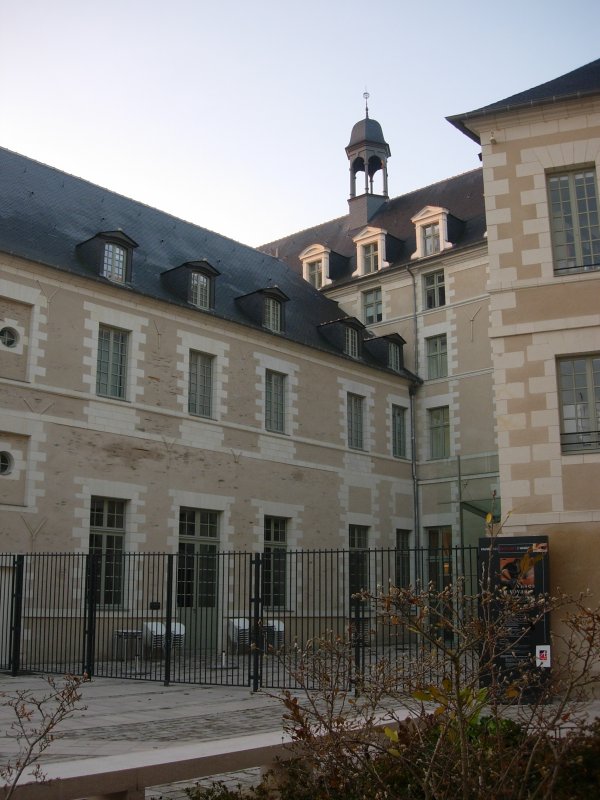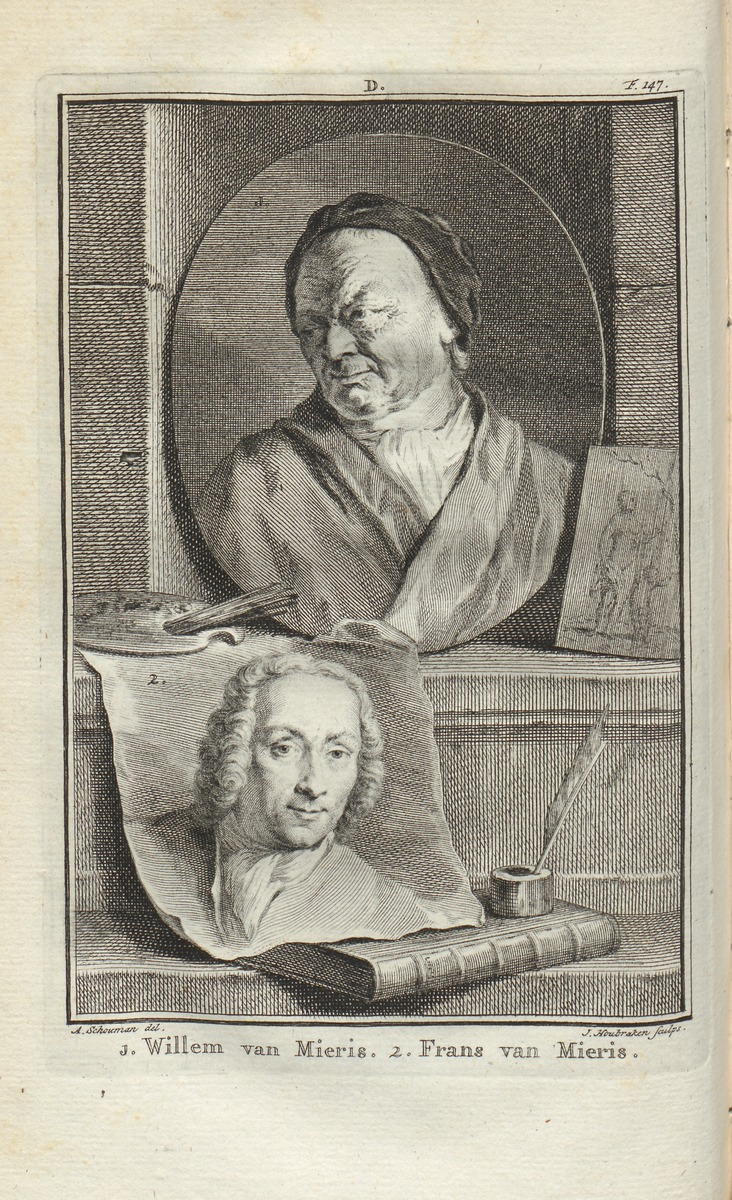|
Musée Des Beaux-Arts D'Angers
The Musée des beaux-arts d'Angers is a museum of art located in a mansion, the "logis Barrault", place Saint-Éloi near the historic city of Angers, western France. Building The museum is part of the Toussaint complex, which includes the garden of Fine Arts, the David d'Angers gallery, the city library and the canteen. It displays a rich collection of art works acquired over the centuries on a total area of distributed as follows: * for permanent collections * for temporary exhibitions * for the public reception areas: lobbies, passing museums, auditorium, video room, coffee shop ... * for technical buildings Thanks to recent restoration the site combines history and development with the most modern presentation. The museum has been classified by the Journal des Arts Museum on 2010 as the best of western France and fourth museum in France (outside Paris). This ranking is due to a redesign of the museum's website and the richness and diversity of the exhibitions. History Af ... [...More Info...] [...Related Items...] OR: [Wikipedia] [Google] [Baidu] |
Angers
Angers (, , ;) is a city in western France, about southwest of Paris. It is the Prefectures of France, prefecture of the Maine-et-Loire department and was the capital of the province of Duchy of Anjou, Anjou until the French Revolution. The inhabitants of both the city and the province are called ''Angevins'' or, more rarely, ''Angeriens''. Angers proper covers and has a population of 154,508 inhabitants, while around 432,900 live in its metropolitan area (''aire d'attraction''). The Communauté urbaine Angers Loire Métropole, Angers Loire Métropole is made up of 29 communes covering with 299,500 inhabitants (2018).Comparateur de territoire INSEE Not including the broader metropolitan area, Angers is the third most populous Communes of France, commune in northwes ... [...More Info...] [...Related Items...] OR: [Wikipedia] [Google] [Baidu] |
Segna Di Bonaventura
Segna di Bonaventura, also known as Segna de Bonaventura, and as Segna di Buonaventura, was an Italian painter of the Sienese School. He was active from about 1298 to 1331. In 1306 he painted a panel for the office of the Biccherna in the Palazzo Pubblico in Siena. In 1317 he painted an altar panel for the convent of Lecceto (near Siena). In 1319 he repaired a figure of the Virgin in the Palazzo Pubblico. In 1321 he painted a panel for the Palazzo Pubblico. Segna di Bonaventura’s sons Niccolò di Segna and Francesco di Segna di Bonaventura were also painters of the Sienese School. Like his uncle Duccio, Segna di Bonaventura’s paintings are characterized by graceful curvilinear rhythms and subtle blends of colors. The Alte Pinakothek (Munich), the Honolulu Museum of Art, the Metropolitan Museum of Art, the Minneapolis Institute of Arts, the North Carolina Museum of Art, and the Pinacoteca Nazionale di Siena are among the public collections having paintings by Segna ... [...More Info...] [...Related Items...] OR: [Wikipedia] [Google] [Baidu] |
Jacob Foppens Van Es
Jacob Foppens van Es, Jacob Fopsen van Es or Jacob van Es (c. 1596 Antwerp – 1666 Antwerp) was a Southern Netherlands, Flemish Baroque painter known for his still lifes mainly of food and occasionally flower paintings. He collaborated with other artists on garland paintings. Together with Osias Beert and Clara Peeters, he was one of the leading representatives of the first generation in Flemish still-life painting.Christine van Mulders. "Es, Jacob van." Grove Art Online. Oxford Art Online. Oxford University Press. Web. 6 March 2017 Life Biographical data about Jacob Foppens van Es' life are scarce. The inscription on a portrait of Foppens van Es engraved by Wenceslaus Hollar after a design by Joannes Meyssens states that he was born in Antwerp. There is no documentary evidence that corroborates his place of birth. In 1617 he became a master of the Antwerp Guild of St. Luke. The fact that he was not registered as a pupil with the Guild before becoming a master, indicates ... [...More Info...] [...Related Items...] OR: [Wikipedia] [Google] [Baidu] |
Theodoor Van Thulden
Theodoor van Thulden (1606–12 July 1669) was a Flemish painter, draughtsman and engraver born in 's-Hertogenbosch in the duchy of Brabant. He is mainly known for his altarpieces, mythological subjects, allegorical works and portraits. He was active in Antwerp, where he had trained, as well as in Paris and his native 's-Hertogenbosch.Theodoor van Thulden at the Life Theodoor van Thulden was born in 's-Hertogenbosch where he was baptized on 9 August 1606 in the St. John's ...[...More Info...] [...Related Items...] OR: [Wikipedia] [Google] [Baidu] |
Jacob Van Ruisdael
Jacob Isaackszoon van Ruisdael (; 1629 – 10 March 1682) was a Dutch painter, draughtsman, and etcher. He is generally considered the pre-eminent landscape painter of the Dutch Golden Age, a period of great wealth and cultural achievement when Dutch painting became highly popular. Prolific and versatile, Ruisdael depicted a wide variety of landscape subjects. From 1646 he painted Dutch countryside scenes of remarkable quality for a young man. After a trip to Germany in 1650, his landscapes took on a more heroic character. In his late work, conducted when he lived and worked in Amsterdam, he added city panoramas and seascapes to his regular repertoire. In these, the sky often took up two-thirds of the canvas. In total he produced more than 150 Scandinavian views featuring waterfalls. Ruisdael's only registered pupil was Meindert Hobbema, one of several artists who painted figures in his landscapes. Hobbema's work has at times been confused with Ruisdael's. Ruisdael ... [...More Info...] [...Related Items...] OR: [Wikipedia] [Google] [Baidu] |
Willem Van Mieris
Willem van Mieris (3 June 166226 January 1747) was an 18th-century painter from the Dutch Republic. Biography Willem van Mieris was a painter, sculptor and etcher active in Leiden. He was born in Leiden and studied under his father Frans van Mieris the Elder (1635–1682), who was a successful genre painter. Willem had a reasonably successful career, being supported by a few patrons who commissioned and collected various of his works. His oeuvre consists mostly of genre and portraiture, with some landscape painting, as well as some sculptures. Van Mieris' style was that of the (painters in the "fine manner"), and his genre works, especially later in his career, depicted scenes from upper-class society. At age 19, Van Mieris took over the family workshop after his father died in 1681, aged 45. He had barely finished his training in the family studio and it would take another two years before he entered the Leiden painters' guild in 1685. He set out to uphold his father's reput ... [...More Info...] [...Related Items...] OR: [Wikipedia] [Google] [Baidu] |
Jan Van Kessel, Senior
Jan van Kessel the Elder or Jan van Kessel (I) (baptized 5 April 1626, Antwerp – 17 April 1679, Antwerp) was a Flemish painter active in Antwerp in the mid-17th century. A versatile artist, he practiced in many genres including studies of insects, floral still lifes, marines, river landscapes, paradise landscapes, allegorical compositions, scenes with animals and genre art, genre scenes.Jan van Kessel (I) at the Netherlands Institute for Art History A scion of the Brueghel family many of his subjects took inspiration of the work of his grandfather Jan Brueghel the Elder as well as from the earlier generation of Flemish painters such as Daniel Seghers, Joris Hoefnagel and Frans Snyders.Willy Laureyssens. "Kessel, van." Grove Art Online. Oxford Art Online. Oxford University Press. Accessed 17 January 2017 Van Kessel ... [...More Info...] [...Related Items...] OR: [Wikipedia] [Google] [Baidu] |
Jan Asselijn
Jan Asselijn ( 1610 – October 1, 1652) was a Dutch Golden Age painter. Biography Asselijn was born at Dieppe, Seine-Maritime, Dieppe from a French Huguenot family as ''Jean Asselin''. He received instruction from Esaias van de Velde (1587–1630), and distinguished himself particularly in landscape and animal painting, though his historical works and battle pieces are also admired. He traveled in France and Italy, and modeled his style after Bamboccio (Pieter van Laer), also a member of the Bentvueghels. Nicolaes de Helt Stockade and Asselijn married two sisters in Lyons in 1645, both daughters of Houwaart Koorman of Antwerp. According to Houbraken, he heard this story from Abraham Genoels, who in turn heard it from Laurens Frank, an artist who was staying in the Koorman household with Artus Quellinus the Elder, Artus Quellinus in Lyons at the time. Their marriages brought both Asselijn and Helt-Stockade back to the Netherlands after their travels. [...More Info...] [...Related Items...] OR: [Wikipedia] [Google] [Baidu] |
Nicolaes Pieterszoon Berchem
Nicolaes Pieterszoon Berchem (1 October 1620 – 18 February 1683) was a highly esteemed and prolific Dutch Golden Age painter of pastoral landscapes, populated with mythological or biblical figures, but also of a number of allegories and genre pieces. He was a member of the second generation of "Dutch Italianate landscape" painters. These were artists who travelled to Italy, or aspired to, in order to soak up the romanticism of the country, bringing home sketchbooks full of drawings of classical ruins and pastoral imagery. His paintings, of which he produced an immense number, (Hofstede de Groot claimed around 850, although many are misattributed), were in great demand, as were his 80 etchings and 500 drawings. His landscapes, painted in the Italian style of idealized rural scenes, with hills, mountains, cliffs and trees in a golden dawn are sought after. Berchem also painted inspired and attractive human and animal figures (staffage) in works of other artists, like Allaert van ... [...More Info...] [...Related Items...] OR: [Wikipedia] [Google] [Baidu] |
Jacob Jordaens
Jacques (Jacob) Jordaens (19 May 1593 – 18 October 1678Jacques Jordaens in the Netherlands Institute for Art History) was a Flemish people, Flemish painter, Drawing, draughtsman and a designer of tapestries and prints. He was a prolific artist who created biblical, mythological, and allegorical compositions, genre scenes, landscapes, illustrations of Flemish sayings and portraits. After the death of Peter Paul Rubens, Rubens and Anthony van Dyck, he became the leading Flemish Baroque painting, Flemish Baroque painter of his time. Unlike those illustrious contemporaries he never travelled abroad to study the Antique and Italian painting and, except for a few short trips to locations elsewhere in the Low Countries, he resided in Antwerp his entire life. He also remained largely indifferent to Rubens and van Dyck's intellec ... [...More Info...] [...Related Items...] OR: [Wikipedia] [Google] [Baidu] |
Frans Franken
Frans Francken I or Frans Francken the Elder (1542, Herentals – 1616, Antwerp) was a Flemish painter who was one of the principal painters in Antwerp during the Counter-Reformation.Ursula Härting. "Francken." Grove Art Online. Oxford Art Online. Oxford University Press. Web. 25 August 2023 He is mainly known for his large altarpieces and allegorical paintings. He was a member of the Francken dynasty of painters that played an important role in the Antwerp art scene in the late 16th century and the 17th century.Frans Francken (I) at the |
Hendrick Van Balen
Hendrick van Balen or Hendrick van Balen I (c. 1573–1575 – 17 July 1632) was a Flemish Baroque painter and stained glass designer. Hendrick van Balen specialised in small cabinet pictures often painted on a copper support. His favourite themes were mythological and allegorical scenes and, to a lesser extent, religious subjects. The artist played an important role in the renewal of Flemish painting in the early 17th century and was one of the teachers of Anthony van Dyck.Carl Van de Velde. "Balen, Hendrik van, I." Grove Art Online. Oxford Art Online. Oxford University Press. Web. 23 November 2016 Life Hendrick van Balen was born in Antwerp. The date of his birth is not known but was likely 1573 as the birth records of the St George Church of Antwerp for that y ...[...More Info...] [...Related Items...] OR: [Wikipedia] [Google] [Baidu] |








